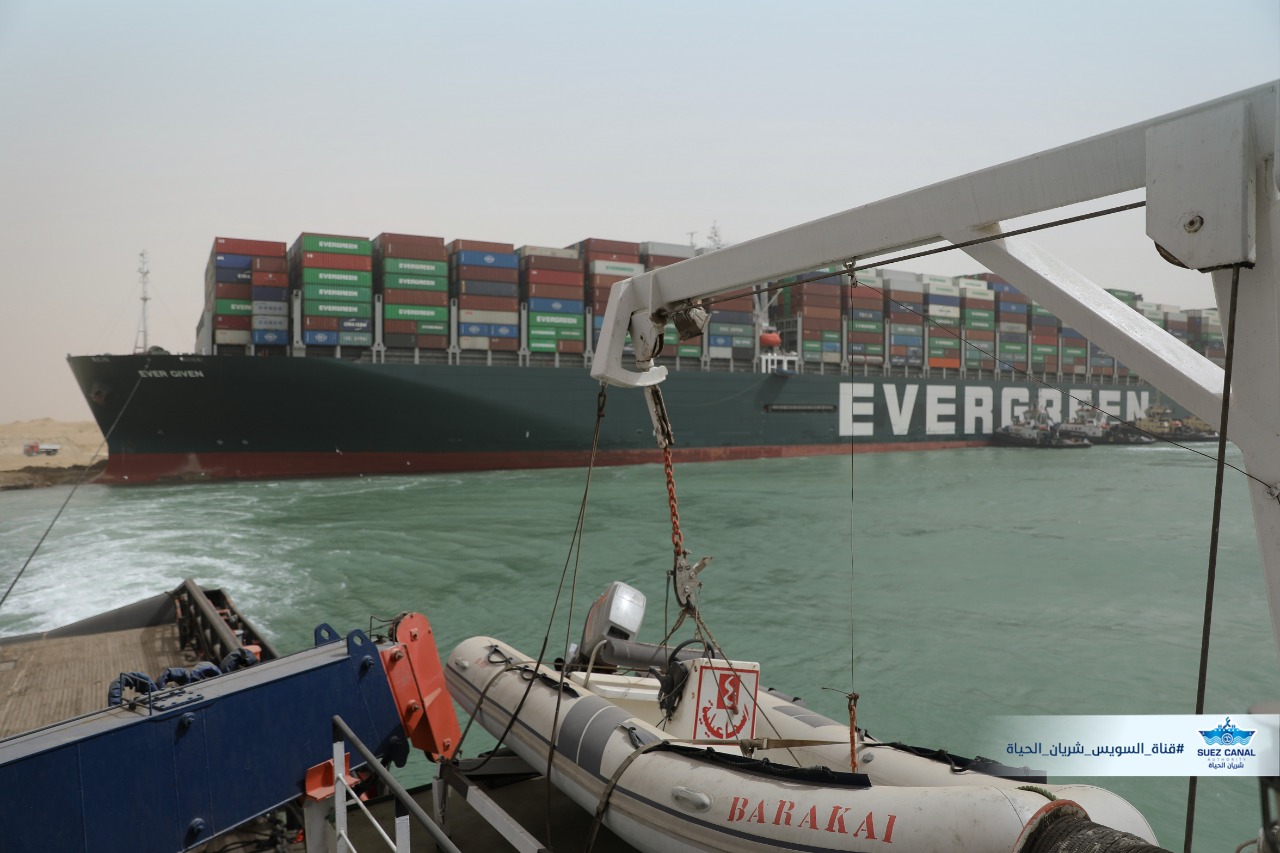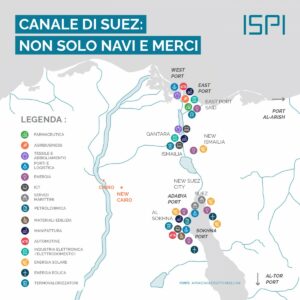Not just oil, what is the risk of a traffic jam in the Suez Canal

Suez Canal: the point with comments and analysis
The Suez Canal , since last Tuesday, has been blocked by a gigantic container ship, the Ever Given, which ran aground diagonally in one of the most critical points of the 173 km of the canal. The boat, owned by the Japanese shipowner Shoei Kisen Kaisha , is 200 meters long (like three football fields), 59 wide and has a capacity of 220 thousand tons. “Even if the situation were to unblock relatively quickly, the consequences of the Ever Given accident will last for a long time – explained Leon Willems , spokesman for the port of Rotterdam -. It will take days to unload the blocked ships once they all arrive at their destination together ”.
The biggest traffic jam in history
What we are witnessing is the largest traffic jam in the history of shipping. According to Bloomberg, the incident would have put about 185 ships on hold, a figure that rises to almost 300 if you also count those that indicated Suez in their travel itinerary. “We are trying to bring the ship back to the surface, but we are facing extreme difficulties”, explained the owner. To resolve the issue, Smit Salvage , a company specializing in maritime rescues, was contacted, which in the past was responsible for moving the Costa Concordia, after the shipwreck off the island of Giglio in 2012. The operations could take several weeks, such as stated by Peter Berdowski , CEO of Royal Boskalis, the company that acquired Smit Salvage.
The effects on the transport of goods
As Repubblica writes, the hypothesis of a prolonged closure of the Suez Canal has sent world shipowners into awe. Lloyd's of London has calculated that the blockade of the canal involves approximately 9.6 billion goods per day . Due to the pandemic, containers are nowhere to be found and their price between Europe and China has quadrupled in a few months, in addition, health protocols have slowed down port operations and in the US there is an average queue of 90 ships for unloading. The Suez blockade can put the car, mobile phone and plastic supply chains in difficulty.
The risks of a prolonged closure: the shortage of containers
According to what was reported by Wood Mackenzie , a prolonged closure could compromise container traffic, already in chaos for months due to the inefficiencies caused by Covid. Il Sole 24 ore writes that transport times have lengthened dramatically and freight rates from China have almost quintupled compared to a year ago, going over $ 8,500 for a 40-foot container . In fact, the supply chains havenot yet fully recovered after the blockade of traffic caused by Covid. The upheaval in traffic has triggered an increase in the price of freight which worries logistics workers, especially for the repercussions it may have on the prices of consumer goods. Furthermore, the stationing of about 200 ships near the Canal could aggravate the situation. “Stuck boxes on ships cannot go back to Asia to be filled again,” explains Sea-Intelligence's Alan Murphy.

Route change
To avoid Suez you have to circumnavigate Africa, with the passage of the Cape of Good Hope : a much more expensive option that extends transport times from Asia by at least 7 days , double in the case of oil tankers. The Maersk company said yesterday it was ready to divert delayed shipments by air and land. Hapag Lloyd will decide in the next few hours whether to give up passing through Suez and circumnavigate Africa on the Europe-China route. Russia has seized the ball to sponsor the Arctic route to unite Asia and Europe. A journey that would give Moscow geopolitical advantages.
The numbers of the Suez Canal
About 12% of world trade and about 7% of oil that travels by sea passes through the Suez Canal. Traffic in Suez, according to rough estimates by Lloyd's List, is worth $ 9.6 billion a day. In 2020, more than one billion tons transported by 18,829 ships passed through the Canal. More than 20% of the ships in transit for Suez are new ships that crossed the canal for the first time in 2020 attracted by the new tariff discounts introduced in the Covid-19 period. In financial terms, 2020 was the third richest year in the history of the Canal . Revenues were $ 5.61 billion, down 3.3% from $ 5.8 billion a year earlier. The data comes from the studies of SRM , the Study Center of Intesa Sanpaolo.
The repercussions on the oil trade
Among the 185 ships blocked in the Canal there are 24 oil tankers , 16 carriers carrying LNG or LPG, 33 container ships and 15 tankers. For Arthur Richier , senior analyst at Vortexa , at least 13 million barrels of crude oil could be affected by the disruption of the Egyptian sea channel. In a few hours the price of the barrel on the markets exceeded 60 dollars : an increase of 5%. In 2020 5,113 Dry Bulker ships, 5,006 Tankers-oil tankers and 4,710 container ships crossed the Channel.
The American study to renew value chains
The stops on production and freedom of movement imposed by the pandemic have caused a shortage of supplies, including essential goods such as masks and disinfectants, making the world discover how interdependent individual countries are . The pandemic revealed that international trade is exposed to the risk of a shock and that the damage is directly proportional to the length of the chains and the number of borders crossed. The US administration has asked federal agencies to assess the resilience of supply chains for sensitive materials in strategic sectors such as healthcare, homeland security, and industrial and technology manufacturing. "We want to ensure that the American people never again have to face the shortage of goods and services they rely on – said President Joe Biden, in a statement released by the White House -, whether it be cars or medicines or food in the grocery store downstairs ".
The future of value chains
It is likely that in the near future we will build shorter and more diversified value chains, also favored by regional free trade agreements. The renewed interest in shorter chains and production in advanced economies is consistent with the objectives of a sustainable economy thanks to a reduction in transport and compliance with stricter environmental and social standards. “The grounding of a container ship in the Suez Canal was enough to expose the fragility of the international trading system, in a situation already complicated by the pandemic – writes Davide Tentori , Ispi Research Fellow, Geoeconomics Observatory – . The hypotheses of "reshoring", which are talked about so much both in the USA and here, are fascinating but not feasible in a short-medium term horizon. Certainly, the image of Ever Given stranded in the strip of sea that separates Africa and Asia shows that, even in an era in which digital commerce seems to be taking over, geography counts and will count for a long time ”.
THE ECONOMIC AND STRATEGIC VALUE OF THE SUEZ CANAL ALSO FOR ITALY. SRM REPORT
This is a machine translation from Italian language of a post published on Start Magazine at the URL https://www.startmag.it/energia/non-solo-petrolio-canale-di-suez/ on Sat, 27 Mar 2021 07:04:55 +0000.
